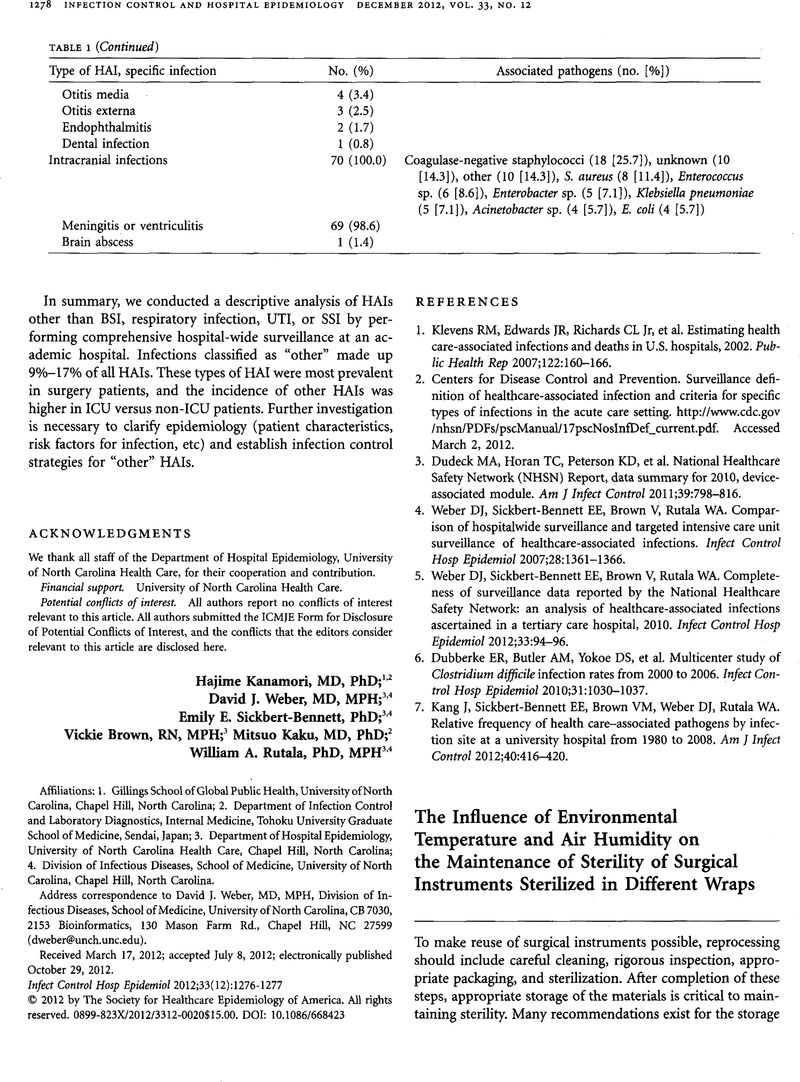Crossref Citations
This article has been cited by the following publications. This list is generated based on data provided by Crossref.
Fayard, Camille
Lambert, Christophe
Guimier-Pingault, Catherine
Levast, Marion
and
Germi, Raphaelle
2015.
Assessment of Residual Moisture and Maintenance of Sterility in Surgical Instrument Sets after Sterilization.
Infection Control & Hospital Epidemiology,
Vol. 36,
Issue. 8,
p.
990.
Thorel, C.
Lemarié, C.
Lemoine, J.-P.
Lebelle-Dehaut, A.-V.
Herran, C.
Bouyssié, J.-F.
Robelet, A.
and
Eveillard, M.
2022.
Study of the sterility maintenance during the storage of cotton cloth wrapped medical instruments after a sterilization cycle performed with a mobile autoclave commonly used in rural areas in developing countries.
Le Pharmacien Clinicien,
Vol. 57,
Issue. 2,
p.
125.
Bouwman, Berendina Elsina
Costa, Dayane de Melo
Tessarolo, Francesco
and
Tipple, Anaclara Ferreira Veiga
2023.
Reuso de barreira estéril de tecido de algodão na prática clínica: estudo longitudinal observacional.
Revista Latino-Americana de Enfermagem,
Vol. 31,
Issue. ,
Bouwman, Berendina Elsina
Costa, Dayane de Melo
Tessarolo, Francesco
and
Tipple, Anaclara Ferreira Veiga
2023.
Reutilización de barrera de tela de algodón estéril en la práctica clínica: estudio observacional longitudinal.
Revista Latino-Americana de Enfermagem,
Vol. 31,
Issue. ,
Bouwman, Berendina Elsina
Costa, Dayane de Melo
Tessarolo, Francesco
and
Tipple, Anaclara Ferreira Veiga
2023.
Reusing sterile cotton fabric barriers in the clinical practice: an observational and longitudinal study.
Revista Latino-Americana de Enfermagem,
Vol. 31,
Issue. ,
Bruna, Camila Quartim de Moraes
2024.
Implementação de evidências científicas na prática do enfermeiro de Centro de Material e Esterilização .
Revista SOBECC,
Vol. 29,
Issue. ,





